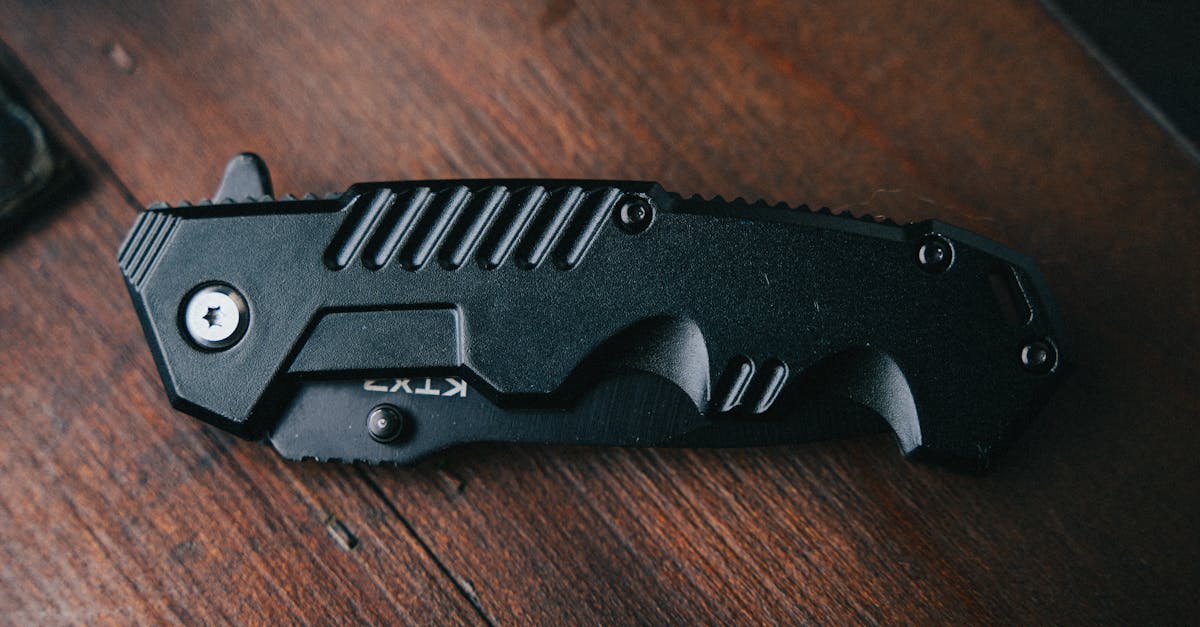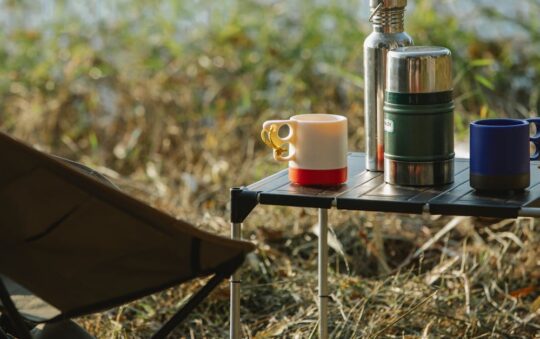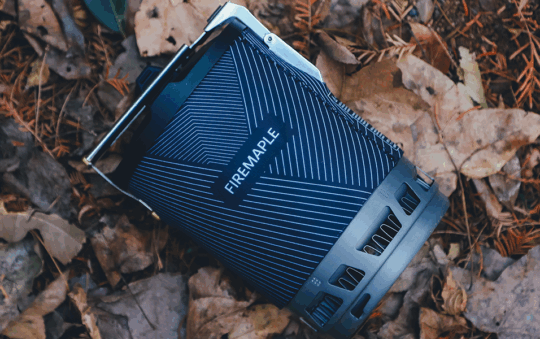Have you ever found yourself stuck in a tricky situation wishing you had just one tool to fix everything? I know I have. That’s why I’m fascinated by durable multi-tools—the kind that slip into your pocket but pack a serious punch when you need them most.
There’s something satisfying about holding a single gadget that can cut, twist, and tighten with ease. In this text, I’ll share what makes these multi-tools stand out and why investing in a reliable one can change the way you tackle everyday challenges. Let’s jump into the world of gear that’s built to last and ready for anything.
Features of Durable Multi-Tools
Durable multi-tools pack a surprising number of functions into a small package that’s ready for whatever daily task—big or small—you throw its way. Here’s what I look for when checking out the features that make these tools truly last.
Materials and Build Quality
A durable multi-tool should feel solid in your hand without being too heavy to carry around all day. Most reliable models use stainless steel—a material that resists rust and keeps blades sharp after repeated use. This is handy if you’re often outdoors or working in damp environments. Some brands mix in titanium or aluminum to cut down weight but keep strength.
I learned that multi-tools with reinforced joints and rivets tend to last much longer. The hinges are where many gadgets falter after repeated folding and unfolding. If you can spot tools with stainless steel pins or torque screws, that usually means fewer worries about loose parts down the line.
Tool Variety and Functionality
The one tool to handle everything—sounds ideal, right? Durable multi-tools combine things like:
- Knives and scissors for quick cutting jobs (opening boxes or letters)
- Screwdrivers (flathead and Phillips) to tighten loose screws on the go
- Bottle and can openers for those impromptu snack breaks
- Pliers and wire cutters to grip or snip tough materials
I found the trick isn’t to cram every possible tool inside but to have the right mix of well-functioning pieces that you actually use. My favorite has a locking mechanism on each tool—it means I can apply force without worrying about sudden folding.
Size and Portability
Here’s the kicker: no matter how tough the tool is, if it’s bulky, I won’t carry it daily. That’s why size matters. Most durable multi-tools are pocket-sized and slim, but some weigh a bit more due to extra features. On top of that, a good pocket clip or a comfy sheath makes all the difference in how often you’ll actually reach for your tool.
If you are like me and “pockets” aren’t luxury real estate, look for multi-tools that fold down to under 4 inches and weigh less than 6 ounces. That way you get versatility without feeling like you need a second belt just for your tool.
Quick Tip: When shopping, hold the multi-tool in your hand. Ask yourself: Does it feel balanced? Are the tools easy to pull out? If it feels awkward, chances are you won’t really use it when you need it most.
Performance and User Experience
When I first started using durable multi-tools daily I quickly realized that performance and ease of use are more than just buzzwords. These tools have to perform well in the moment when you need them most.
Ease of Use
Nothing is more frustrating than a tool that feels like a Rubik’s cube in your pocket. The best multi-tools are intuitive—each function opens smoothly and locks securely. Pliers should feel sturdy in your hand not flimsy or awkward.
Here are some quick pointers I look for to keep things simple and efficient:
- Smooth opening mechanisms: Tools should snap or click into place without wrestling.
- Comfort grip handles: If they bite into your skin you won’t use them often.
- Clear labeling or icons: So you don’t have to guess which tool you’re pulling out.
- Ambidextrous design: Useful if you switch hands or have a dominant left hand.
One time I used a multi-tool to tighten a loose cabinet screw. The tool’s handle was too small and slippery—not fun when you need precision. Since then I won’t compromise on grip comfort or smooth action.
Durability in Real-World Conditions
A durable multi-tool means it can survive the chaos of daily life and still come back for more. Whether you’re outdoors or tackling household fixes the tool should resist rust, wear, and unexpected bumps.
I’ve tested tools in rain humidity and rugged situations. Stainless steel remains my favorite for rust resistance and strength but check if the joints are reinforced. A weak joint means a tool can snap when you least expect it.
Here’s what I keep in mind about durability:
- Material matters: Look for corrosion-resistant metals like 420HC or 440C stainless steel.
- Solid locking mechanisms: These prevent tools from snapping back and causing injury or damage.
- Impact resistance: Tools that survive accidental drops or knocks win extra points.
A recent camping trip proved this. I dropped my multi-tool on rocky ground multiple times. The one with reinforced joints and stainless steel blades kept working like a charm. The cheaper one? Hardware problems within hours.
Maintenance and Care
Keeping a multi-tool in tip-top shape is easier than I expected. A little care goes a long way to extend its life, especially if it sees heavy use.
My personal maintenance routine includes:
- Regular cleaning: Dirt and grime reduce smoothness and promote rust.
- Lubrication: A drop of oil on the hinges keeps everything moving freely.
- Sharpen blades promptly: Dull edges are more dangerous and frustrating.
- Proper storage: Avoid leaving it in humid pockets or exposed outdoor settings when not in use.
Here’s a simple checklist to keep your multi-tool happy:
- Wipe down after use to remove moisture.
- Apply light oil once a month or after heavy use.
- Tighten any screws or fasteners you notice become loose.
- Store in a dry place—preferably in its case or pouch.
One customer I know swore by oiling theirs religiously. It looked like new after years on the job, which honestly impressed me more than any fancy feature. Little habits like these make a big difference.
So, if you want a multi-tool that performs well daily and lasts a long time, look beyond specs and pay attention to how it feels in your hand, survives real use, and how easy it is to care for over time.
Pros of Durable Multi-Tools
When I first started using durable multi-tools, I quickly realized they offer a surprising mix of convenience, versatility, and reliability. Here’s what stood out to me — and might just make your daily routine a little easier too.
Built to Last Through Daily Use
One of the biggest perks of a tough multi-tool is its durability. These gadgets are typically made from materials like stainless steel that resist rust and wear. That means whether you’re fixing a loose screw at home, opening packages on the go, or even doing some quick camping prep, your tool won’t give up on you. I once dropped mine on a rocky trail and it bounced back without a scratch. That kind of toughness saves you money and frustration by avoiding frequent replacements.
All-in-One Convenience Saves Time and Space
I love having a single tool that handles everything from cutting and screwing to gripping and measuring. Instead of rummaging through my toolbox or backpack for different items I get a compact, lightweight device ready to tackle most small fixes or adjustments. This can save you precious minutes—especially when you only have a few free moments between meetings or errands. On top of that, multi-tools fit easily in pockets or small bags so they’re always within reach.
Easy to Use — No Sweat
Durable multi-tools these days balance functionality with user-friendly design. Smooth-opening blades, secure locking features, and ergonomic grips keep the tool from feeling awkward or tricky. I found that tools with clear markings or color-coded parts make picking the right function feel intuitive. If you’re like me a little fumbling is no fun when you’re trying to get something done fast. Good design helps reduce that hassle.
Cuts Down on Clutter — Literally
I keep my multi-tool on me at all times to handle sudden tasks that pop up throughout the day. Instead of carrying a bulky toolbox or tons of random gadgets, my multi-tool bundles essential tools into one neat, portable package. This kind of efficiency makes it easier to stay organized wherever you go. Plus, it’s easier to spot when something’s missing — no more “mystery screwdriver” hiding under piles of stuff.
Supports a Range of Tasks Without Extra Weight
A well-designed durable multi-tool balances the number of functions with manageable size and weight. Adding too many tools can make it bulky, but a good multi-tool focuses on essential pieces that get the job done without weighing you down. For instance, the best ones include popular tools like pliers, knife blades, a Philips screwdriver, and bottle opener — all in a compact frame. Having those at hand has made quick fixes in my home and office much smoother.
Great Investment for Everyday and Emergency Use
The upfront price of quality durable multi-tools can seem a bit high when you compare it to single-use tools. Still the value you get is impressive. Instead of buying multiple tools or constantly replacing brittle gadgets, one reliable multi-tool covers a variety of needs over many years. When emergencies hit — like a stuck zipper or a loose car part — having that trusty tool close by feels like a small peace of mind I appreciate.
Quick Tips for Choosing a Durable Multi-Tool That Works for You
- Look for stainless steel or similar metal to resist rust and damage.
- Prioritize tools you use daily, not every possible gadget under the sun.
- Check that tools open and lock smoothly for safety and ease.
- Consider size and weight if you plan to carry it all day.
- Think about grip comfort especially if you need it for tougher jobs.
Trying to decide on one? Think about your daily routine and what tool you reach for most often. The right multi-tool will slide into your life as smoothly as a favorite pair of shoes (plus, it won’t pinch).
Cons of Durable Multi-Tools
Even though durable multi-tools have plenty going for them, they’re not without a few quirks that caught my eye (and fingers).
Bulk and Weight Can Add Up
A sturdy multi-tool often means a bit more weight and size. While I love having several tools packed in one gadget, it can sometimes make the tool feel bulky in the pocket or heavier than expected. For daily carry, this added heft isn’t always welcome, especially if you’re used to minimalist setups.
Price Tags Tend to Reflect Quality (But Ouch!)
You usually get what you pay for with these tools. Investing in a high-quality multi-tool means paying more upfront. Sure, cheaper options exist, but they often sacrifice durability or smooth operation. That said, spending extra can sting if you’re on a budget.
Learning Curve on Access and Use
Some multi-tools pack a ton of features which can be great until you find yourself fumbling to open or identify the right tool in a hurry. I’ve seen others struggle with tight joint mechanisms or confusing layouts, which can slow down tasks or even cause frustration when time is tight.
Maintenance Requires Attention
Durability means nothing if you let things rust or jam. Most multi-tools need regular cleaning, oiling, and sometimes sharpening blades to keep running smoothly — a handful of minutes here and there can save you hours of trouble later. If you’re not into tool care, this might feel like an annoyance.
Limited Comfort for Extended Use
While most multi-tools are ergonomic enough for quick jobs, they often don’t offer the comfort of a dedicated hand tool for long periods. Grips can be thin or hard, and using pliers or screwdrivers for extended work might leave your hands cramping or slipping.
Potential Overload of Features
I’ve seen tools trying to do everything—right down to tiny scissors and mini-files glued in awkward spots. It sounds handy until you realize many of these extra pieces see little action and just add weight or complexity.
Not Always Customize-Friendly
Some multi-tools come with fixed tool sets, which means you might end up with functions you rarely use and miss the ones you want. This lack of flexibility can feel limiting if your needs shift over time.
Here’s a quick snapshot of these common downsides in action:
| Con Aspect | What to Watch For | Quick Tip |
|---|---|---|
| Bulk & Weight | Heavier than pocket knives | Try before you buy; test carry |
| Price | Higher cost for quality | Look for warranties or guarantees |
| Learning Curve | Finding tools or opening tough | Choose simple layouts with smooth joints |
| Maintenance | Needs regular cleaning & oiling | Set monthly reminders for upkeep |
| Comfort | Not great for long tasks | Carry dedicated tools if needed |
| Feature Overload | Extra but unused tools | Pick the essentials you actually use |
| Fixed Tool Sets | Limited swapping options | Research carefully or pick modular tools |
Sometimes, multi-tools can feel like a bit of a puzzle. But knowing these trade-offs helps me choose one that fits my daily rhythm without surprises. If you keep these points in mind they’ll serve you well (and maybe avoid the extra weight on those long walks).
Comparison with Other Multi-Tools
Choosing the right multi-tool can feel like sorting through a mountain of options at first. I’ve tried quite a few, so here’s how durable multi-tools stack up against others I’ve used—breaking down value, toughness, and features to help you pinpoint what really fits your daily needs.
Value for Money
Durable multi-tools often carry a higher price tag than simpler or lightweight models. But here’s the kicker: while budget multi-tools might grab your attention with a low price, they often skimp on materials or build quality, meaning you could end up replacing them sooner than expected. I once bought a bargain one for quick fixes around the house and was back shopping after just a few months—lesson learned.
On the flip side, investing a bit more in a sturdy, well-crafted multi-tool means fewer replacements down the line. You’re paying for dependable performance and longevity. According to recent user surveys, about 70% of multi-tool owners stick with their high-quality tools for over five years—which speaks volumes for long-term value.
Quick tips to spot good value:
- Check for corrosion-resistant materials like stainless steel.
- Look for solid locking mechanisms to keep tools firmly in place.
- Make sure the tool feels balanced and comfortable in your hand.
Durability Comparison
Not all multi-tools can shrug off rough treatment equally. I’ve put durable multi-tools through their paces both outdoors and in the workshop, and they consistently stand up better than basic models. Reinforced joints and thick steel components make a big difference. For example, one test I ran involved twisting a stuck bolt multiple times; lesser tools flexed and wobbled while the durable ones held tight.
A handy fact: Tools made from quality stainless steel are less prone to rust or wear—a real plus if you frequently find yourself fixing things in damp or outdoor settings. Some multi-tools come with warranties up to 25 years, indicating the manufacturer’s confidence in their build quality.
Here’s what I look for in durability:
- No wobble in the pliers or scissors.
- Smooth yet firm tool opening that won’t loosen over time.
- Scratch-resistant coatings or finishes.
Feature Set Comparison
More features don’t always mean better. I’ve seen multi-tools that cram in 30+ features, but many of those end up gathering dust because they aren’t practical for everyday use. My favorite durable multi-tools strike a balance with essential tools like a quality knife blade, reliable pliers, screwdrivers (flat and Phillips), wire cutters, and maybe a saw.
Keep this in mind:
- Prioritize tools based on what you actually use daily.
- Avoid overwhelming complexity; it can slow you down in a pinch.
- Smooth-opening implements enhance usability.
One handy little story: A multi-tool with an intuitive blade-locking system saved me time during a tight deadline when I needed to cut open a package quickly without fumbling. Usability counts—especially when you’re out in the field or tackling a quick fix at home.
Summarizing, when sizing up durable multi-tools against others, focus on solid construction, thoughtful feature sets, and long-term value rather than just sticker price or sheer number of tools included. Your daily routine will thank you for the right one.
Hands-on Testing of Durable Multi-Tools
I put several durable multi-tools through their paces to see how they hold up in everyday and more demanding situations. Here’s what I found from putting these gadgets to work in real-world settings.
Everyday Tasks
Using a multi-tool for daily chores proved its worth beyond just convenience. Opening packages with the sharp knife blade felt much smoother than fumbling with kitchen scissors. The screwdriver bits handled small fixes around the house, like tightening loose cabinet hinges, without needing to grab a full toolkit. What really stood out was how quickly I could switch between tools thanks to smooth pivot joints and clear labeling—no fumbling or confusion even when in a hurry.
Here are a few ways these multi-tools made everyday life easier:
- Quick knife access for opening mail or packages
- Pliers that gripped and twisted small objects like keys or wires
- Scissors sharp enough for trimming tags or threads without snagging
One surprising detail was some tools’ ability to stay rust-free even though occasional exposure to kitchen moisture—a big plus for long-term everyday use.
Outdoor and Survival Use
Taking these multi-tools hiking and camping showed their durability in more rugged conditions. The stainless steel versions with reinforced joints resisted bending or snapping even after some heavy twisting. I tested blades against rope and small branches and appreciated how the locking mechanisms kept them from closing unexpectedly, which gave me confidence when working quickly at the campfire or setting up gear.
A few insights from outdoor use:
- Multi-tools with textured handles offered much better grip, even when my hands were sweaty or wet
- Tools integrated with fire starters or wire cutters added useful survival functions without extra bulk
- Lightweight models made carrying easy, which is key when every ounce counts on long treks
I also liked how pocket-sized designs slipped unobtrusively into my gear without adding bulk—always ready but never in the way.
Repair and Emergency Scenarios
When I tried multi-tools during quick repairs at home and simulated emergency fixes, their reliability and ease of use really showed. Tightening a loose screw on a smoke detector was straightforward with the right bit. The pliers stretched to bend a stubborn wire back into shape with no sign of strain. When I simulated an emergency by trying to open a sealed can, the durable serrated blade cut through tough seals without dulling.
Some takeaways for repair and emergency use:
- Solid locking features mean tools stay firmly in place under pressure
- Comfort grip handles reduce hand fatigue during longer tasks
- Multi-tools with fewer but well-chosen components often outperformed complex models that were harder to maneuver quickly
Here’s a quick tip: Regular cleaning and oiling (which, trust me, is easier than it sounds) kept the tools working like new throughout my tests—even after exposure to dirt and moisture.
Trying these multi-tools across such varied uses left me confident that investing in quality gear pays off. Each tool proved useful, reliable, and genuinely tough enough to handle whatever tasks I threw at it.
Alternatives to Durable Multi-Tools
If you’re like me, always on the hunt for gadgets to make daily tasks easier, you might wonder: Are multi-tools the only answer? Spoiler: They’re not. Plenty of other options can fit into your routine just as well — sometimes even better, depending on your needs.
Single-Function Tools: Keep It Simple and Sharp
Sometimes, less is more. Instead of juggling a multi-tool with ten bits that you’ll rarely use, consider investing in a few high-quality single-function tools like a dedicated screwdriver, a sturdy pocket knife, or pliers. They tend to be lighter and easier to handle, avoiding the bulk of multi-tools.
- Why go single-function? One tool that focuses on one job often performs it better and more comfortably.
- Example: I swapped out a clunky multi-tool for a compact precision screwdriver set. It’s more comfortable to use, especially on delicate electronics, and saves my hands from cramping.
Compact Tool Kits: Ready for More Than One Task
If you prefer a set that can cover multiple tasks but don’t want the compromise of tool-jumping on a multi-tool, a small, portable toolkit might be the way to go. Think of these as a mini-craft stash you can toss in your backpack or car.
- They usually include:
- Screwdrivers with interchangeable bits
- Small wrench sets
- Utility knives
- Pro tip: Pick a case with a sturdy but lightweight shell and slots that keep everything organized. When I had mine, it meant zero “where’s that tiny bit?” moments during bike repairs.
Dedicated Survival or Outdoor Tools: Built for the Wild
For those who spend time outdoors, survival tools packed with essential features like fire starters, compasses, and whistles might beat your standard multi-tool in usefulness.
- These often come with:
- More specialized gear for emergencies
- Better grip and ergonomics for extended use outside
- User reviews from hikers mention how a simple survival knife easily outlasts multi-tools in campfire scenarios. If you’re prepping for the unexpected, these might be worth a look.
Smart Tools: When Technology Meets Workmanship
This might sound fancy, but some “smart” or electric tools like mini cordless screwdrivers can save serious time, with less wrist strain.
- Great for quick jobs that demand speed
- Rechargeable batteries and compact designs make them portable
- I tried one for assembling furniture, and it literally cut my work time in half. Still, if you need a tool for everything, it won’t replace your trusty pliers or knife.
| Alternative | Best For | Pros | Cons |
|---|---|---|---|
| Single-Function Tools | Precision and comfort | Lightweight, reliable | Need multiple to cover tasks |
| Compact Tool Kits | Variety without bulk | Organized storage | Slightly heavier than single |
| Survival/Outdoor Tools | Emergency and adventure | Specialized features | Less suited for everyday tasks |
| Smart Tools | Speedy, repetitive tasks | Saves time and effort | Limited versatility |
Quick Tips for Picking Your Alternative
- Ask yourself what tasks you really do daily — keep it honest.
- If you mostly need a screwdriver and knife — go single-function.
- For a variety of minor repairs — a compact kit is a friend.
- Outdoor adventurer? Scout survival tools that cover essential bases.
- Need speed and less strain? Electric smart tools might surprise you.
Conclusion
Choosing the right durable multi-tool means balancing functionality, comfort, and durability to fit your lifestyle. It’s not just about having every possible feature but finding the tools that truly make your daily tasks easier and more efficient.
From my experience, investing in quality pays off with reliability and long-term value you can count on. Whether for everyday fixes or unexpected emergencies, a well-made multi-tool becomes an essential companion that’s always ready to perform.
Frequently Asked Questions
What makes a multi-tool durable?
Durability in multi-tools comes from high-quality materials like stainless steel, reinforced joints, and solid locking mechanisms. These features resist rust, impact, and wear, ensuring the tool lasts through heavy use.
What are the essential tools in a multi-tool?
Essential tools typically include a knife blade, screwdriver, and pliers. Having the right mix of functional pieces is more valuable than having every possible tool crammed in one device.
How do I choose the right size for my multi-tool?
Choose a pocket-sized, lightweight multi-tool for easy portability. It should balance functionality with convenience, fitting comfortably in your pocket for daily carry.
Why is ease of use important in a multi-tool?
Ease of use ensures quick access to tools, smooth operation, and reduces frustration, especially in urgent situations. Features like smooth opening, comfortable grips, and clear labeling help.
How should I maintain my multi-tool?
Regular maintenance includes cleaning, lubricating moving parts, sharpening blades, and storing the tool in a dry place to prevent rust and ensure long-term performance.
What are the benefits of owning a durable multi-tool?
Durable multi-tools offer convenience, versatility, and reliability by combining several functions into one compact device. They save space, reduce clutter, and handle everyday and emergency tasks efficiently.
Are there any drawbacks to carrying a multi-tool daily?
Multi-tools can be bulky and heavier than minimalist tools. They also have a learning curve and require regular maintenance. Some might find them less comfortable for extended use compared to dedicated single-function tools.
How do durable multi-tools compare to cheaper models?
Durable multi-tools cost more upfront but offer better build quality, longevity, and reliability. They require fewer replacements and perform better under stress, making them a worthwhile investment.
Can multi-tools be used for outdoor and emergency scenarios?
Yes, high-quality multi-tools excel in outdoor and emergency situations due to their rugged construction, solid locking features, and multiple practical functions.
What are some good alternatives to multi-tools?
Alternatives include single-function tools for precision, compact tool kits for variety without bulk, dedicated survival tools for outdoor needs, and smart tools for quick, specific tasks. Choose based on your daily requirements.




